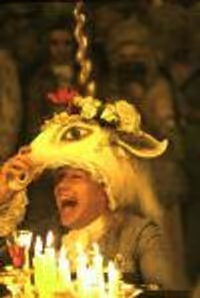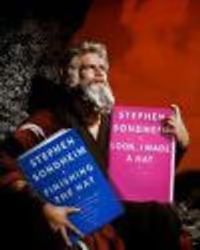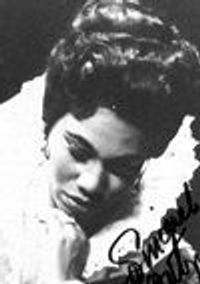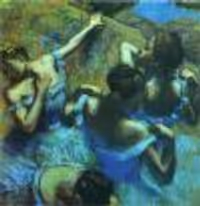The Highest Note Ever Sung at the Metropolitan Opera--and It's by an Understudy!
#1The Highest Note Ever Sung at the Metropolitan Opera--and It's by an Understudy!
Posted: 12/29/09 at 9:15am
In an operatic version of 42nd Street, a youngster went on and a star was born.
American soprano Rachele Gilmore made an unscheduled debut at the Metropolitan Opera on Christmas Eve* in Offenbach's Les Contes Hoffman.

Gilmore was given only three hours' notice that Kathleen Kim was ill and that she was on. She hit several high Gs and an A-flat above high C, the highest note ever sung at the Met.
Here is her big aria, "The Doll Song," from the dazzling new production directed by Bartlett Sher:
http://www.youtube.com/watch?v=L48zGHrlpxI
Here's the article on BWW:
___
*CORRECTION: FrogsFan pointed out that it was December 23, not the 24th
Metropolitan Opera Announces Cast Change Advisory For LES CONTES D'HOFFMANN
#2re: The Highest Note Ever Sung at the Metropolitan Opera--and It's by an Understudy!
Posted: 12/29/09 at 9:35amShe's incredible! All of the negative comments on youtube are kind of depressing, though. Even though they were acting, I loved watching the faces of the cast all around her on stage.
#2re: The Highest Note Ever Sung at the Metropolitan Opera--and It's by an Un
Posted: 12/29/09 at 9:35amMy goodness, the control she has in her upper range is unlike anything i've ever heard. What a great Christmas gift that was for her.
#3re: The Highest Note Ever Sung at the Metropolitan Opera--and It's by an Un
Posted: 12/29/09 at 9:51am
That was wonderful - thanks for sharing, PJ.
Schmerg, opera queens can be the most vicious slags on earth, making the comments by the worst posers on the main board look like child's play in comparison. ![]()
After Eight
Broadway Legend Joined: 6/5/09
#4re: The Highest Note Ever Sung at the Metropolitan Opera--and It's by an Un
Posted: 12/29/09 at 10:32am
Good for Rachele Gimore. I hope this will propel her to a great career.
Pal Joey: I dasagree with you that this was a "dazzling" new production. On the contrary, I found it a dreadful production, just one more in a long line of operas ruined by directors' "concepts." They should stick to the original composers' "concepts," and we'd all be a lot better off.
Bartlett Sher did a great job with "South Pacific." Maybe he should stick to the theatre.
Broadway Legend Joined: 12/31/69
#5re: The Highest Note Ever Sung at the Metropolitan Opera--and It's by an Un
Posted: 12/29/09 at 11:21amIs it written that way (A Flat) and just usually not sung or did she "ad lib" that note?
#6re: The Highest Note Ever Sung at the Metropolitan Opera--and It's by an Un
Posted: 12/29/09 at 11:41am
Joe, I was wondering the same thing.
Also wondering where it is confirmed that she hit the highest note. The BWW article is just about the cast changes. Was there an article somewhere about her hitting the highest note?
#7re: The Highest Note Ever Sung at the Metropolitan Opera--and It's by an Un
Posted: 12/29/09 at 11:46am
Coloratura arias are written to climax with a section of improvised ornamentation.
Sometimes the passages and trills are written out and sometimes they are improvised, depending on what the composer specified.
I'm not a singer so I don't know how difficult that note is, but I love the sense of fun she communicates while she reaches it.
Q
Broadway Legend Joined: 11/3/05
#8re: The Highest Note Ever Sung at the Metropolitan Opera--and It's by an Un
Posted: 12/29/09 at 11:55amWow.
#9re: The Highest Note Ever Sung at the Metropolitan Opera--and It's by an Un
Posted: 12/29/09 at 12:03pmI never knew people bootlegged Operas. Interesting. And incredible!
Broadway Legend Joined: 12/31/69
#10re: The Highest Note Ever Sung at the Metropolitan Opera--and It's by an Un
Posted: 12/29/09 at 12:12pmYou've never seen the Lisbon Traviata?
#11re: The Highest Note Ever Sung at the Metropolitan Opera--and It's by an Un
Posted: 12/29/09 at 12:51pm
A friend just posted this:
you MUST hear Natalie Dessay's recording, where she interpolates a quick high 'G' toward the end, but then ends on a sustained high 'Ab.' Surreal.
Natalie Dessay has sung at the Met, but apparently never in this role or with that note.
I'd love to hear her do it too.
And Joe--Lisbon Traviata is by and of another generation.
Broadway Legend Joined: 12/31/69
#12re: The Highest Note Ever Sung at the Metropolitan Opera--and It's by an Un
Posted: 12/29/09 at 1:29pmPity.
#13re: The Highest Note Ever Sung at the Metropolitan Opera--and It's by an Un
Posted: 12/29/09 at 2:07pm(As un-bitchily as possible lol) Actually, Natalie sang the doll in the old Met production and she was wonderful. She interpolated a high note in the second verse (I think it was an “f”) but she did not do any of the other crazy interpolations or runs Rachele does throughout. Delicious!
#14re: The Highest Note Ever Sung at the Metropolitan Opera--and It's by an Un
Posted: 12/29/09 at 3:12pm
Thanks, Brunhilde. So who decides which trills a singer will sing? The singer? The conductor?
And when? These daring trills wouldn't be improvised on the spot, would they?
When would it be decided that the understudy would sing the highest note ever sung at the Met?
#15re: The Highest Note Ever Sung at the Metropolitan Opera--and It's by an Un
Posted: 12/29/09 at 3:49pm
She's a marvel. It's a shame that she isn't singing the entire run. Kim is a fine, solid singer, but nowhere near as impressive vocally, in my opinion.
PJ--in my experience, conductors usually are the ones with the final say about trills, interpolations, ornamentation and the like. If I'm not mistaken, this particular performance was conducted by John Keenan, a very underrated conductor on the Met's staff who often subs for Levine when he's indisposed.
That video is very good--looks almost professionally shot.
#16re: The Highest Note Ever Sung at the Metropolitan Opera--and It's by an Un
Posted: 12/29/09 at 3:51pmShe's a u/s, but the Met is more than familiar with her style. She's auditioned and given recitals there.
#17re: The Highest Note Ever Sung at the Metropolitan Opera--and It's by an Un
Posted: 12/29/09 at 4:37pmRe interpolations, the singer and the conductor (are supposed to) work together. The singer will let the conductor know that he or she would like to add a little something special and the conductor makes the final decision. Callas added an e flat during an Aida in Mexico City. She graciously cleared it with the conductor and her fellow principals. Of course, there are some who do what they whatever they want. Montserrat Caballe wanted to hold the last note in Don Carlo till the very end of the music - some 16 seconds. The conductor didn't like the stunt and refused. So she "forgot" every performance!
#18re: The Highest Note Ever Sung at the Metropolitan Opera--and It's by an Un
Posted: 12/29/09 at 6:05pmForgive me for not knowing much about opera or the Met, but how do we know for sure that it's the highest note ever sung there? It it just because it's not actually written in any scores from previous productions? How do we know someone didn't improvise in the past?
#19re: The Highest Note Ever Sung at the Metropolitan Opera--and It's by an Un
Posted: 12/29/09 at 6:09pmGood point, Cats.
#20re: The Highest Note Ever Sung at the Metropolitan Opera--and It's by an Un
Posted: 12/29/09 at 7:02pmQuite a show-stopper, that one...
--Aristotle
#21re: The Highest Note Ever Sung at the Metropolitan Opera--and It's by an Un
Posted: 12/29/09 at 7:19pm
Even if it's not officially record-breaking, she would still be in very select company, and she has proof in her favor.
It's been so long since I've sang that I didn't think I'd be able to tell which it was. As if it wasn't dramatic enough, my dog jumped into my lap and barked at the screen. I wouldn't be able to talk for days after attempting (and failing) at notes like those.
Wanting life but never knowing how
#22re: The Highest Note Ever Sung at the Metropolitan Opera--and It's by an Un
Posted: 12/29/09 at 7:39pmI think she's faboo. Thanks for sharing this, PJ. Opera singers don't talk much as it is. Opera gives singers breaks between performances--the Met does only maybe 2-3 per week, maximum. Can you imagine singing that aria 8 times/wk?
#23re: The Highest Note Ever Sung at the Metropolitan Opera--and It's by an Un
Posted: 12/29/09 at 9:18pm
JaySUS!.
Not crazy about the costume and tempo, but man, she barely broke a sweat and made it seem so effortless which is the amazing part. She just DID it, so simply and perfectly in character.
Loved the bows.
#24re: The Highest Note Ever Sung at the Metropolitan Opera--and It's by an Un
Posted: 12/29/09 at 11:19pm
How do we know someone didn't improvise in the past?
There's a lot of discussion about whether some unrecorded performance in the 1920s might have been that high, but opera people tend to obsess about these details, and no one has come forward to say there has been a trill higher than her A-flat.
Here's the same song, not at the Met, with coloratura Elise Curran going as high as a B-flat.
http://www.youtube.com/watch?v=zg3kusGxlLI
And here is the extraordinary Natalie Dessay, doing the same aria--brilliantly--without a similar high note.
http://www.youtube.com/watch?v=3XFUjLFlPpU
Videos











